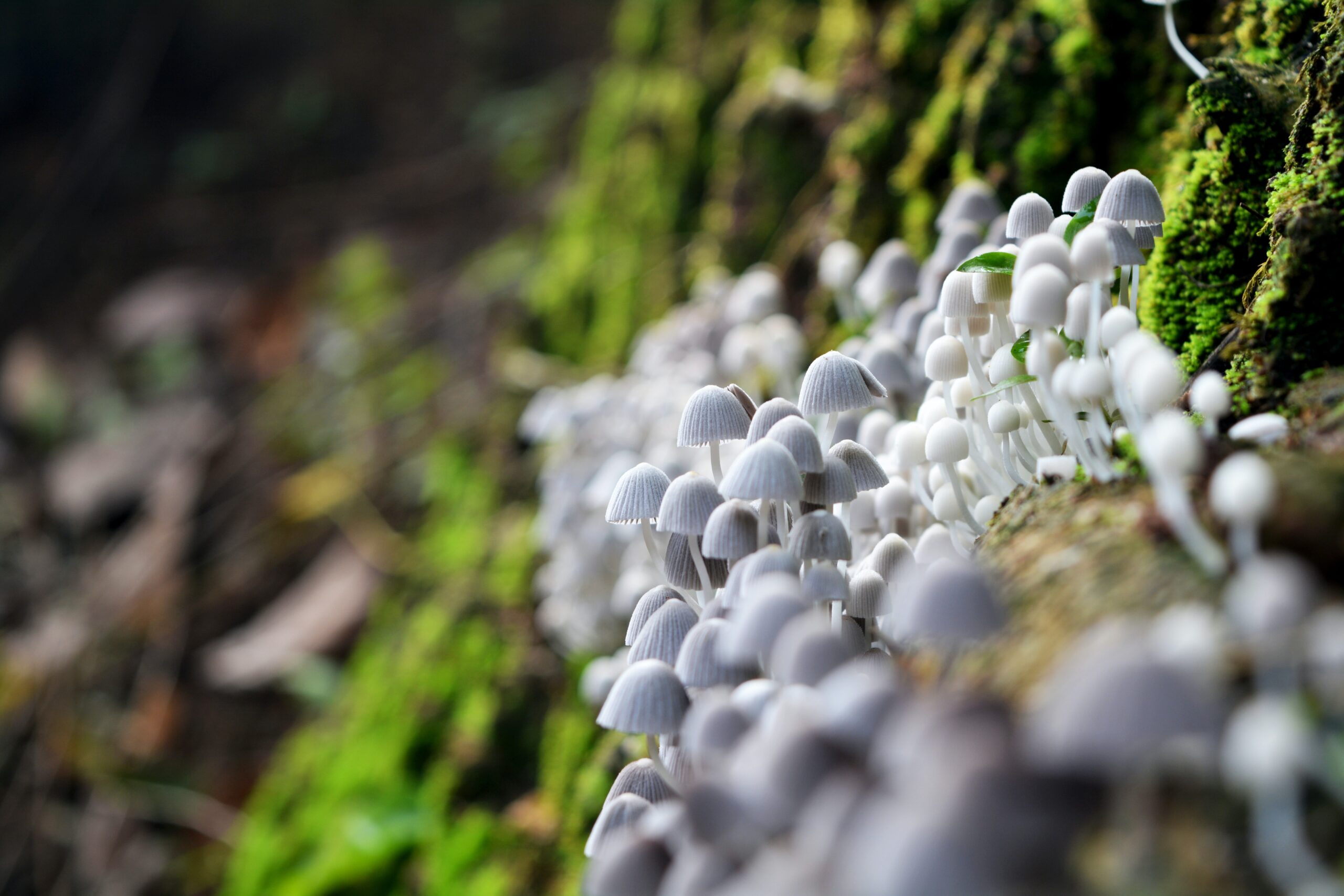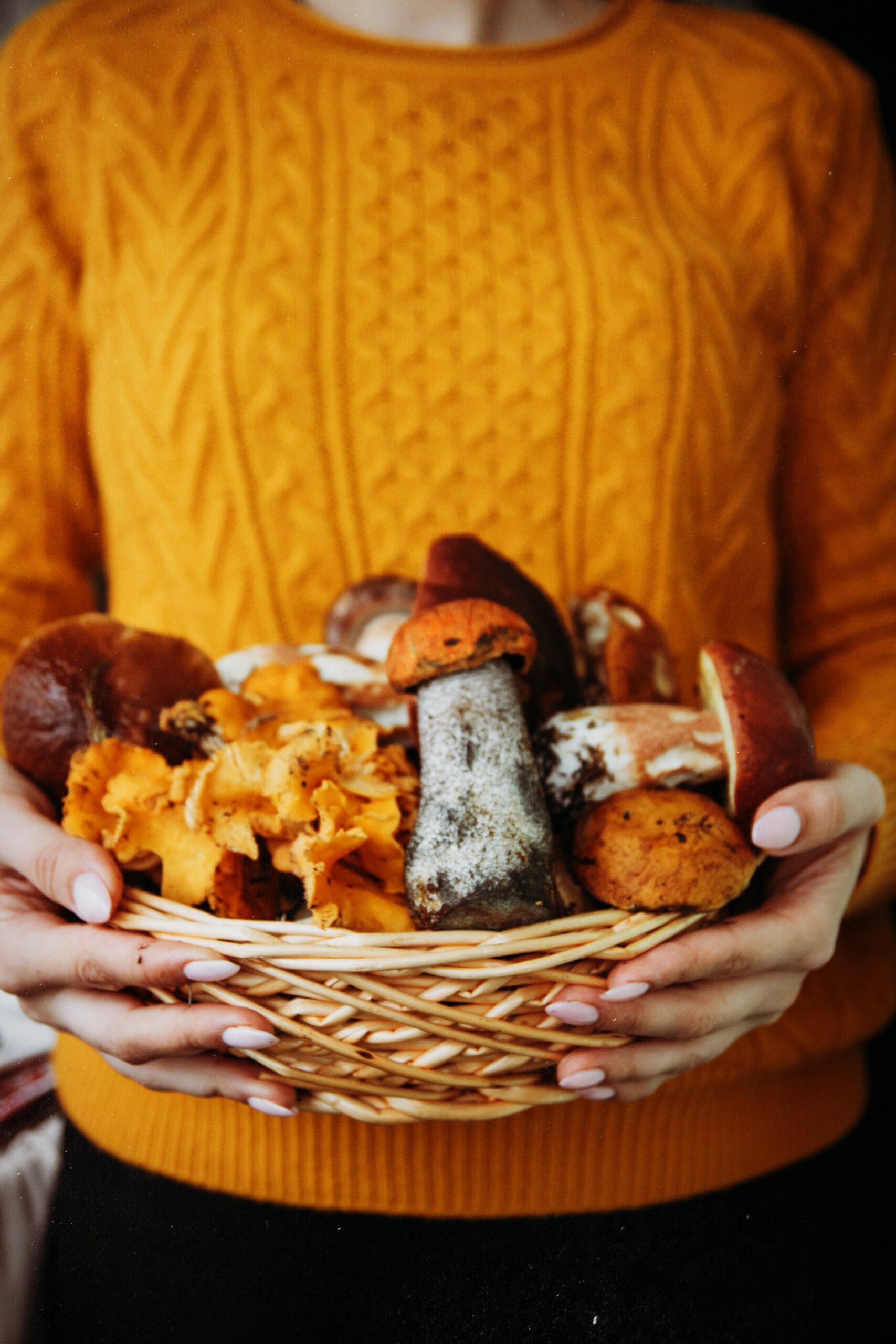Mushroom species cannot be discussed without mentioning fungus. A mushroom is a reproductive structure for some types of fungi, just like fruit is to a plant. In the holes or gills beneath their crowns, mushrooms generate millions of spores that are too small to be seen with the human eye. When these spores land, they create microscopic roots threads called mycelium that penetrate their new food sources and feed on them. These spores are dispersed by animals that are feeding and by the wind. Mushrooms have a very rapid rate of growth once they have rooted.
Read on for more information about mushrooms!
What is a Mushroom
The reproductive structure that some fungus generate is a mushroom. It resembles a plant’s fruit in some ways, with the exception that the “seeds” it produces are actually millions of tiny spores that develop in the pores or gills found beneath the mushroom’s cap. The spores can spread by the wind or by being eaten by animals. If a spore falls into a fertile surface like soil or wood, it will germinate and form a network of tiny roots called mycelium to reach its new food source. The mycelium remains, frequently for many years, drawing nutrition and producing its annual crop of mushrooms in contrast to the mushroom, which appears and swiftly dies.
Mushrooms are fungus. They are of a different species than animals and plants. Nutrition in fungi is dissimilar to that in plants and mammals. Plants produce their own food through photosynthesis, but animals must first ingest it and then digest it internally. The mycelium of fungi grows into or around the food source, secretes enzymes that externally breakdown the food, and the mycelium then absorbs the nutrients that have been digested. These generalizations don’t apply to all creatures; some are classified into their own kingdoms based on traits other than feeding preferences.
Magic Mushrooms Dispensary: Understanding the Rapid Growth of Mushrooms
The astonishing speed at which mushrooms can grow is a marvel of nature, captivating both scientists and enthusiasts alike. Behind this swift growth lies a combination of biological factors and environmental conditions. Mushrooms possess a unique reproductive strategy; unlike plants, they do not rely on photosynthesis but instead absorb nutrients from their surroundings. This allows them to channel their energy directly into growth, leading to rapid development under suitable conditions.
Additionally, mushrooms reproduce through spores, which are dispersed into the environment and can quickly germinate when they find a suitable substrate. Factors such as humidity, temperature, and nutrient availability play crucial roles in facilitating the rapid growth of mushrooms. In the controlled environment of a magic mushrooms dispensary, where optimal conditions can be maintained, mushrooms can thrive and grow at an astonishing pace, mesmerizing observers with their mystical emergence.
How Quickly Does a Mushroom Develop
Mushroom growth rates vary depending on the species, but generally speaking, they are quite rapid. How come? This is partially due to the fact that mushrooms grow by cell enlargement rather than cell division, which is how plants and animals do.
This enables them to quickly and efficiently puff up. They require moisture and humidity to survive, and they can transform over night from a tiny pinhead to a huge, capped mushroom.
The fungi that grow the fastest are oyster mushrooms. The fact that you won’t have to wait long for results makes cultivating mushrooms at home a popular hobby for gardeners. Usable mushrooms may often be grown from spores in one to two months. This applies to common kinds like oysters and buttons.
Places Mushrooms Grow
From 40 to 90 degrees Fahrenheit, mushrooms can grow in a wide variety of environments. Even though they start blooming in the chilly spring months, they do best in an environment with year-round temperatures about 70 degrees. Additionally, essential for mushroom growth is moisture. Mushrooms struggle to hold onto moisture because they lack skin. In order to keep the fruiting bodies from drying out, they must grow in a damp environment.
Mushrooms need the proper quantity of light and temperature for optimum growth. Because most mushrooms favor shade or darkness, you can frequently discover them on forest floors. Some mushrooms, however, like the ones you would find growing on dung in a field, need anywhere from moderate shade to full sun. If they have a good substrate to develop on, mushrooms are more likely to be able to adapt to less than perfect conditions.
Common Characteristics of Mushrooms
- Stalk-and-cap. The most well-known edible kinds, including button and portobello mushrooms, are found in mushrooms with a stalk and cap. Sadly, harmful mushrooms, such the Amanita bisporigera or “destroying angel,” also have a cap and stalk, making it challenging to distinguish between edible and dangerous mushrooms.
- Mycelium. This is the true fungus that produces what we think of as mushrooms. A single mushroom may be connected to an acre-sized underground network of mycelium. The largest mycelium discovered so far is believed to cover 1,500 acres of land and was discovered in Oregon.
- Spores. All mushrooms produce spores, but how those spores end up distinguishes different varieties of mushrooms. Some mushroom spores undergo sexual fertilization, but others require neighboring spores to land in order to generate a new mushroom.
- A wavy, bowl-like, or planked appearance. Not all mushrooms have the same shape, and spherical mushrooms, like the edible puffball mushroom, show significant physical variations from other types of mushrooms. Other mushrooms are planked and occasionally wavy in shape, like those that are observed crawling up the side of a tree. A common illustration is the oyster mushroom, which can be seen growing on birch tree bark or dead tree trunks.
- Special mushrooms. Some mushrooms simply don’t look like other mushrooms and don’t conform to the standard button mushroom mold.
Increasing Mushroom Productivity
Fungi cannot make their own sustenance because they lack chlorophyll. They depend so significantly on the nutrients in the materials around them because of this. The organic material that serves as the substrate on which mushrooms grow comes in a variety of forms. The most likely mushroom growth to be observed is on the stump or fallen tree. These mushrooms include varieties including chaga, oyster, and chicken-of-the-woods mushrooms.
On the forest floor, where they may benefit from all the decomposing organic waste, other mushrooms prefer to flourish. More often than not, these mushrooms will be cap and stem kinds like morel and chestnut mushrooms. The common button mushroom thrives in nutrient-rich soil as well.
Health Benefits of Mushrooms
Maitake and shiitake mushrooms, which are edible, have long been employed in traditional medicine. Reishi is one example of a difficult mushroom that has only ever been used medicinally. Mushrooms may include plant compounds and components that have antioxidant, anti-inflammatory, and anti-cancer benefits, although the precise mechanism is still being studied. Research on animals and cells demonstrates that mushrooms can activate immune cells, macrophages, and free radicals, which can halt the growth and spread of tumor cells and result in the death of existing tumor cells. The polysaccharides found in mushrooms, such as beta-glucans, are thought to provide these anti-cancer effects.
Choose mushrooms with entire, sturdy caps that are evenly textured. They should be stored in the refrigerator until used, preferably within a week. Wait to clean or wash them until right before use. As contrast to tight plastic wrapping that traps moisture, storing in a brown paper bag with the top open will help to absorb moisture and prevent them from deteriorating. Mushrooms do not freeze well since they are roughly 80–90% water, and thus become mushy when defrosted.
Because they are delicate, mushrooms require gentle cleaning. To remove any dirt, either gently run water over them, or use a paper towel that has been soaked to brush the dirt away.
The water-soluble nutrients (B vitamins, potassium) in mushrooms that are cooked in high-temperature water, such as boiling or microwaving, may escape into the cooking water. The best cooking techniques for conserving nutrients are rapid high-heat sautéing and low-heat simmering, as in soups.
Not every mushroom can be eaten. Poisonous wild mushrooms are those that have white gills or a ring around the stem. It’s recommended to buy your mushrooms in the market unless you are skilled at identifying wild mushrooms because some other inedible mushrooms appear like edible mushrooms.
In conclusion
The illusion of a squat, spongy organism with little utility or value may be mushrooms’ most stunning trick. To understand the value of fungi in our daily lives, one need not collect spores, molds, and fungi like the late, great Egon Spengler.
They can be found everywhere, from intricate underground networks that link entire ecosystems to cutting-edge medical applications. Amazing things that mushrooms do have an impact on our environment in ways that we still don’t fully comprehend.


